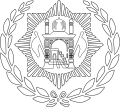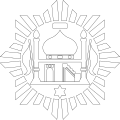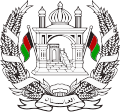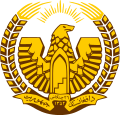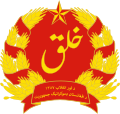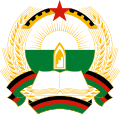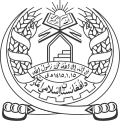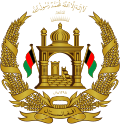This article needs additional citations for verification .(January 2024) |
| National emblem of the Islamic Emirate of Afghanistan | |
|---|---|
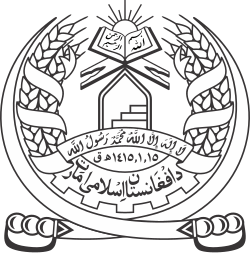 | |
| Armiger | Islamic Emirate of Afghanistan |
| Adopted | 15 August 2021 [1] |
| Motto | لا إله إلا الله محمد رسول الله "There is no god but God; Muhammad is the messenger of God." (Shahada) |
The national emblem of Afghanistan is a national symbol of Afghanistan's government. Since 1901 it has often been featured on the flag of Afghanistan.




